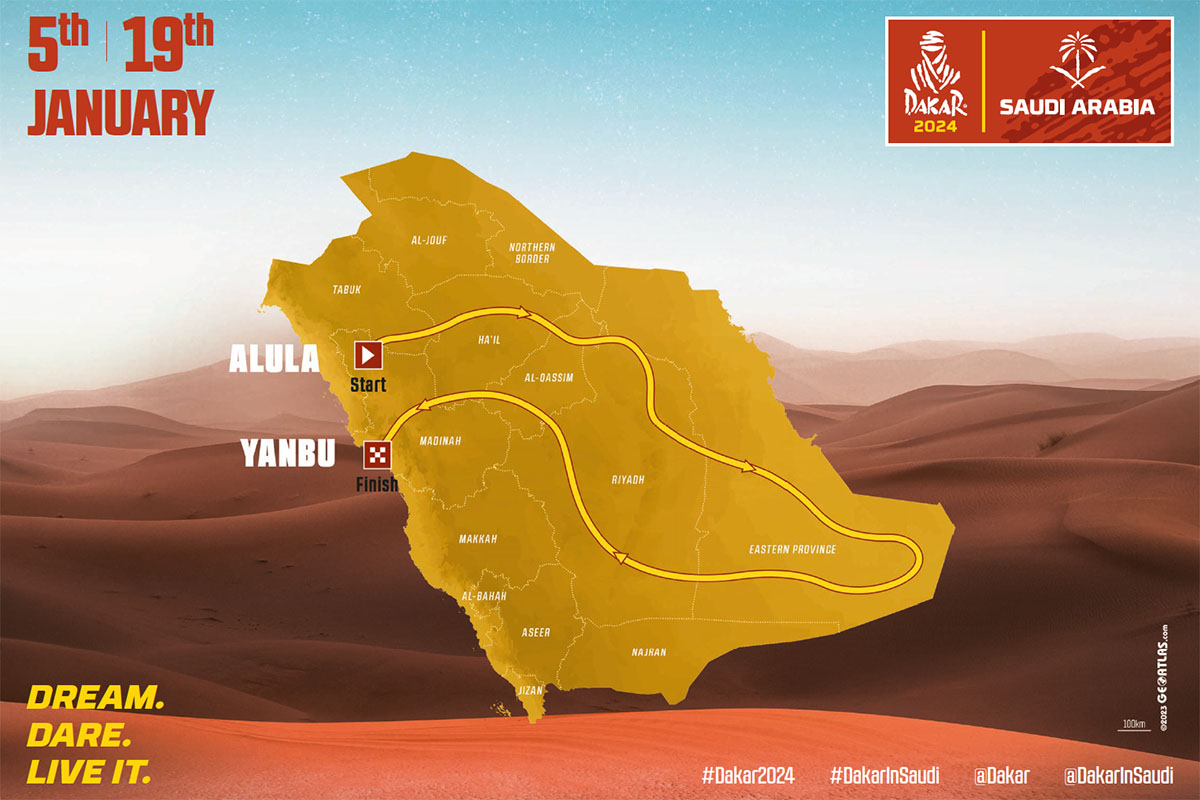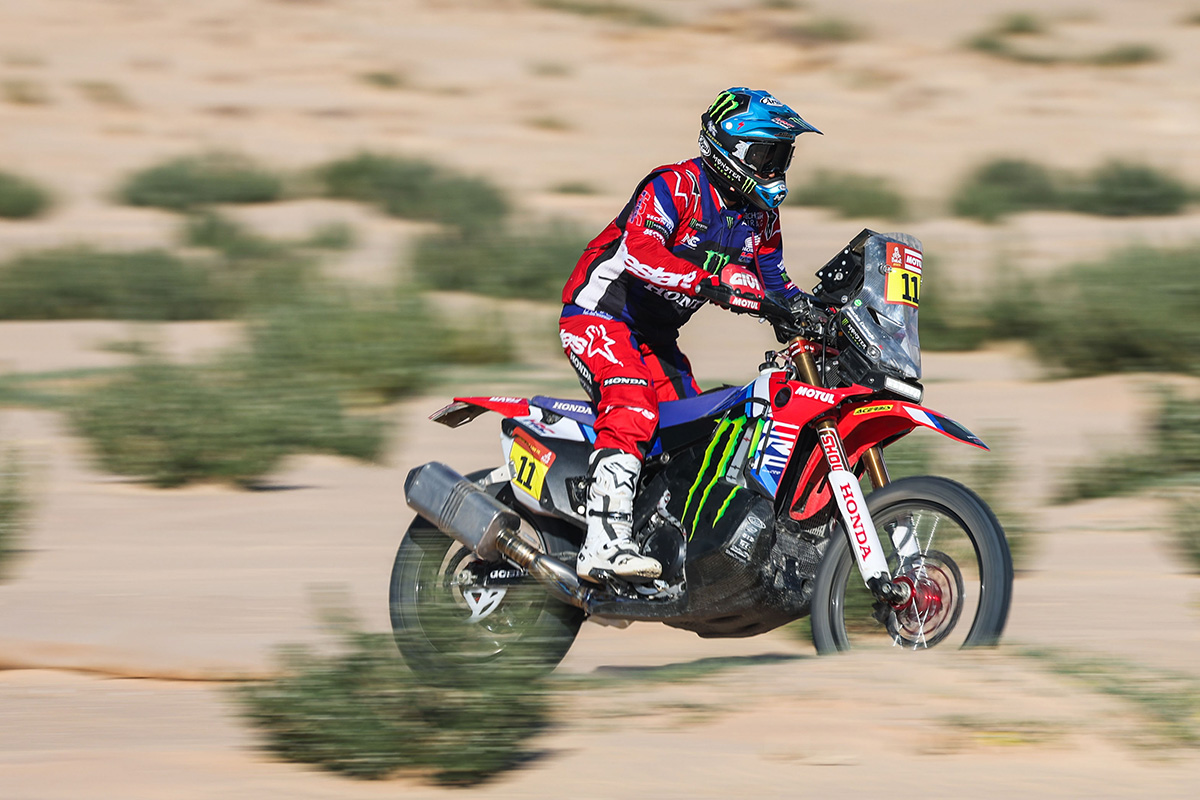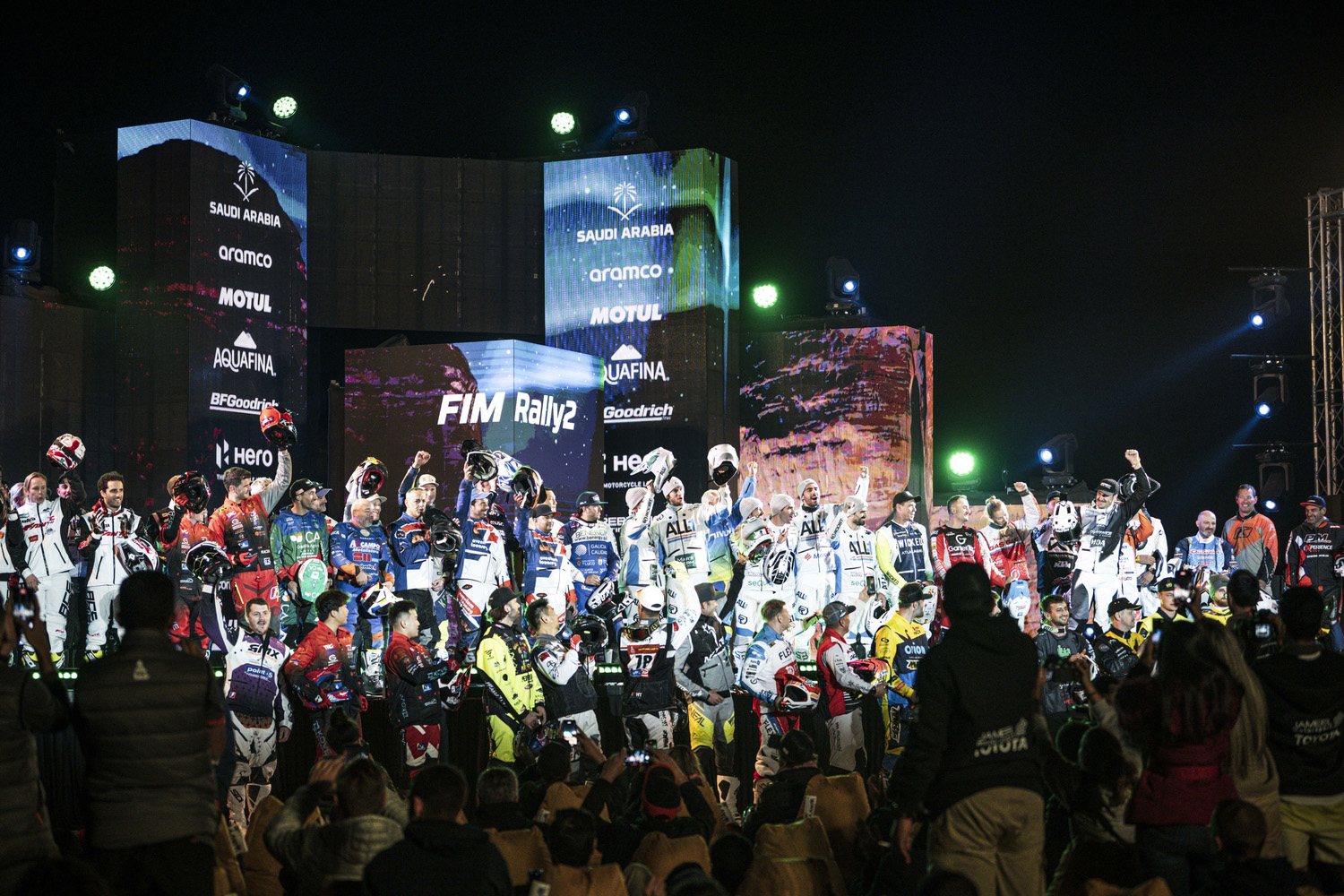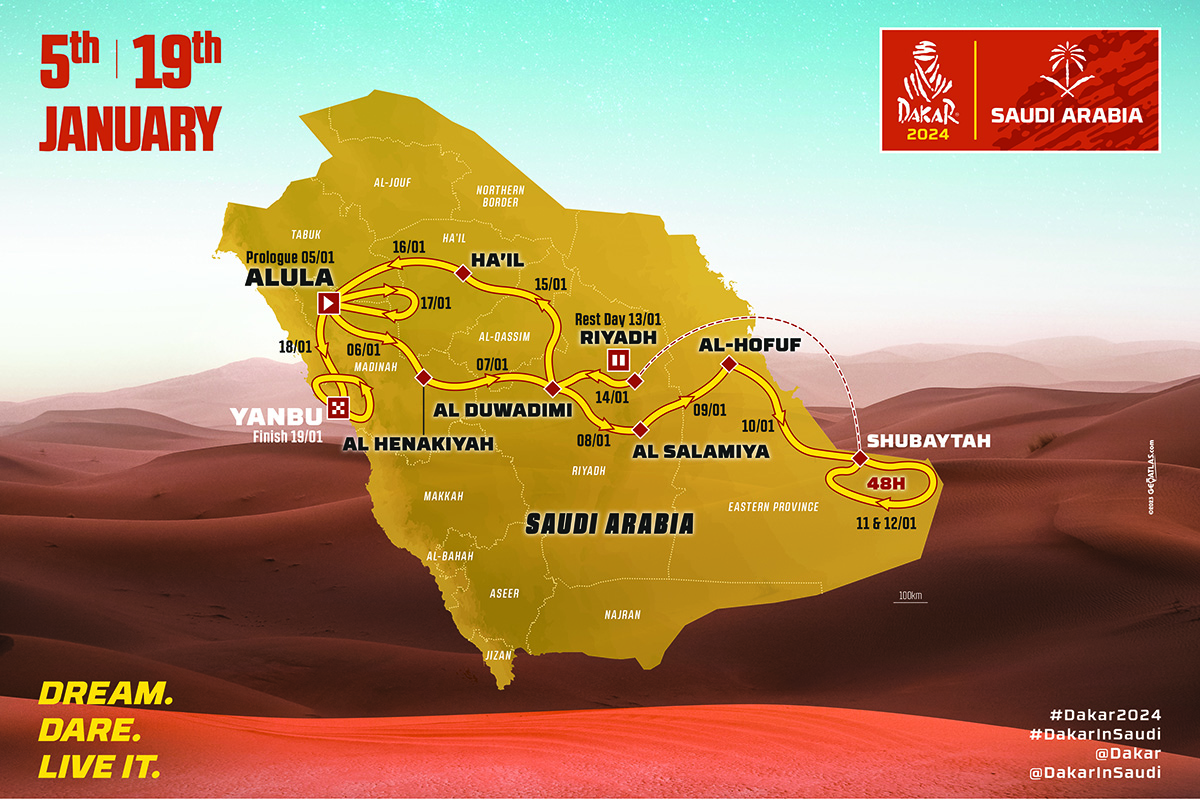2024 Dakar details revealed – Jan 5 to 19, Al-Ula to Yanbu, “48hr time trial” and digital roadbooks or not?
Amaury Sports Organization (ASO) has announced details for the 46th edition of the Dakar Rally in 2024 – January 5 to 19 dates set on a 14-stage, 5000-kilometre course from Al-Ula to Yanbu with a surprise “a 48-hour time trial” and how realistic is the digital roadbook?
Seven months ahead of the 2024 Dakar Rally start, ASO, joint promoter of the Dakar Rally and the World Rally-Raids, has revealed the first information about the fifth edition of the toughest off-road event on the planet in the Saudi Arabian deserts.
The 2024 Dakar Rally will take place from January 5 to 19 (at last, Christmas and New Year at home!) through 14 days of competition – prologue, one rest day, and 12 stages – and more than 5000 kilometres of timed special that will take riders and drivers from Al-Ula, the HQ and start also last year, to Yanbu, on the shores of the Red Sea. Among all that will be a “60% unprecedented” route that returns again to the impressive Empty Quarter in the south east of Arabia with a surprise gift of 48-hours time trial.

Back to the Empty Quarter
“The challenge will be as great as last January,” says Dakar race director David Castera who promises large doses of dunes and technical difficulties including the navigation challenges.
The Saudi Empty Quarter starts as the main protagonist of the 46th edition of the toughest off-road race on the planet created by Thierry Sabine in 1977 and which, by 2024, has pulled an ace out of the hole with a new format of “time 48 hours”, with the limitations typical of a marathon stage, although the pilots will be able to help each other in the afternoon.
“48 hour chrono”: no connection or strategies, 8x bivouacs and riders separated like school children
The novelty in this new idea for ’24 lies in the fact that “this time you will not be able to choose your dining room or workshop companions”, say ASO. The riders will be distributed among eight different bivouacs, without any connection, in which all motorcycles will have to stop from 4pm until the start of the following day, which means riders will have been incommunicado in terms of classification for all that time and will only know their results at the end of the 600-kilometre special the following day. A new gymkhana for them, without orders or team strategies for two days.
The immensity of the Empty Quarter desert will witness this new stage with the 2024 edition continuing with the influential time bonuses for those who open the track.
Mission 1000, a test bench for manufacturers
Another of the novelties for the 2024 rally falls under the framework of the ‘Dakar Future’ programme and will be called Mission 1000. Basically it will offer manufacturers the possibility of testing their vehicles with innovative technologies in the Dakar scenario itself with some concessions.
A laboratory throughout the first hundred kilometres of each stage will allow them to test their new designs and developments in the best open-air test bench that exists. Details of this are down to the manufacturers but so far alternative fuels and electric motorcycles have yet to make a meaningful appearance in the two-wheeled category.
The elephant in the room: digital roadbooks
It’s been a great source of debate for a number of years since the rally organisers introduced digital roadbooks for the four-wheeled vehicles. It’s fair to say they are by now a success: easily adjusted if necessary due to weather or route changes, robust, simple to use ‘smart’ technology and a lot less bother than printing great sweeps of paper for every competitor.
The problem area for bikes is they have no roof over their heads and therefore the screen can be difficult – impossible at times – to read due to the sun.
Glare, plus the angle at which the roadbook should sit and the dust all play a role in obscuring the visibility of the roadbook to competitor who are standing to race, read and navigate.
While the digital roadbooks might have been used in some motorcycle rallies elsewhere, the step to get the very best riders using them safely at the speeds they travel (that difference should not be underestimated) is by all accounts not there yet.
The grape vine tells us the organisers want to make them compulsory in 2024, the riders are not so keen. Rumour is the factory riders have tested them several times and all agree it’s dangerous…
Photo Credit: Enduro21






















